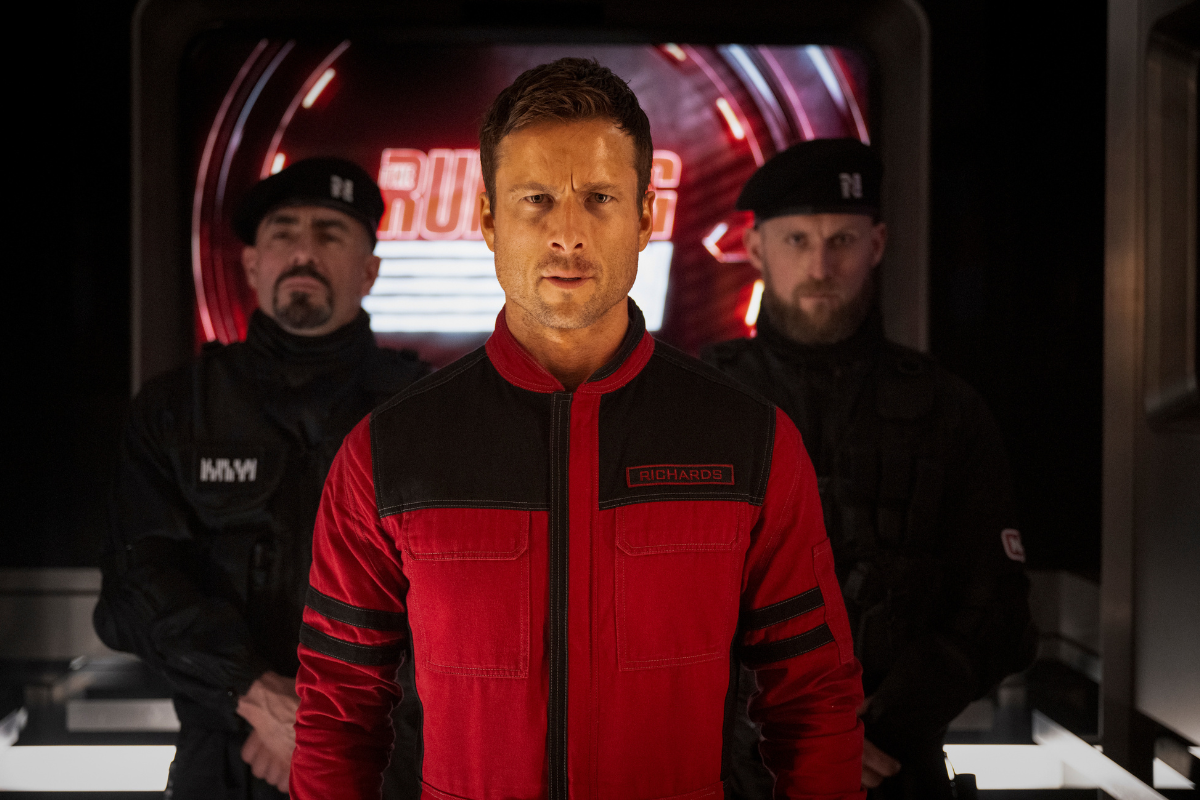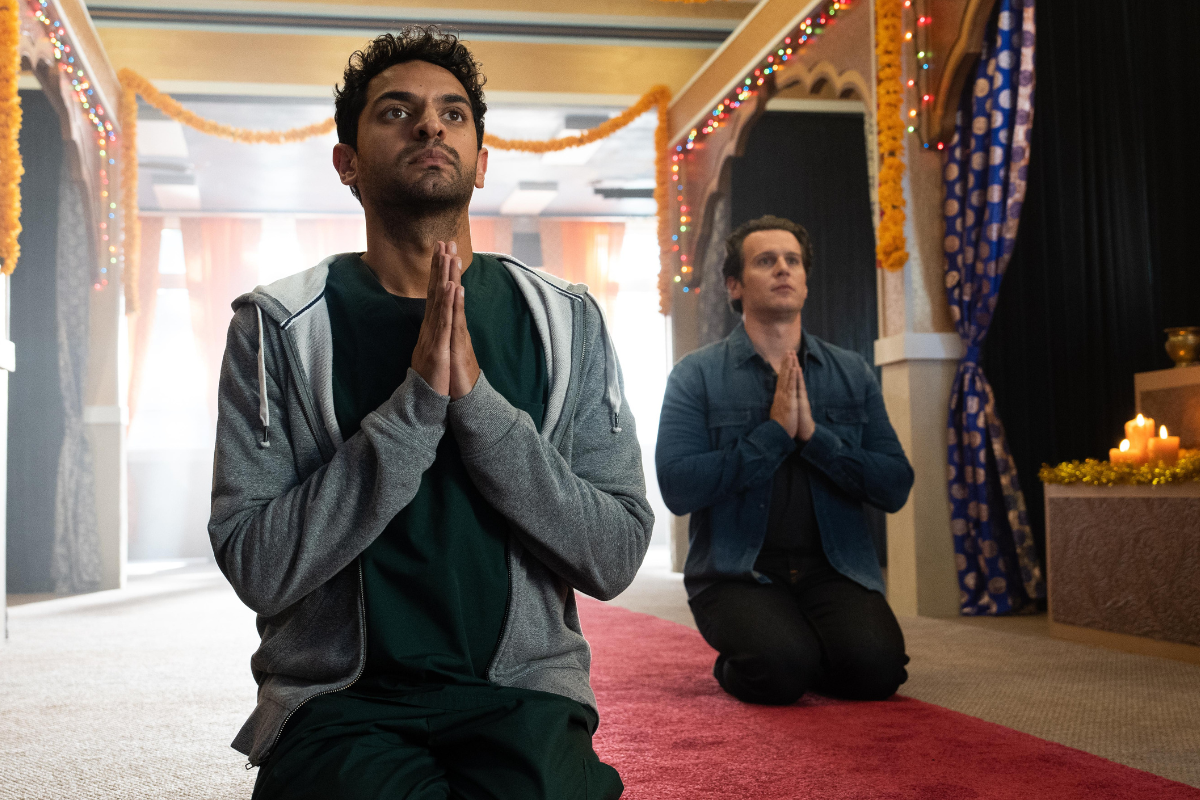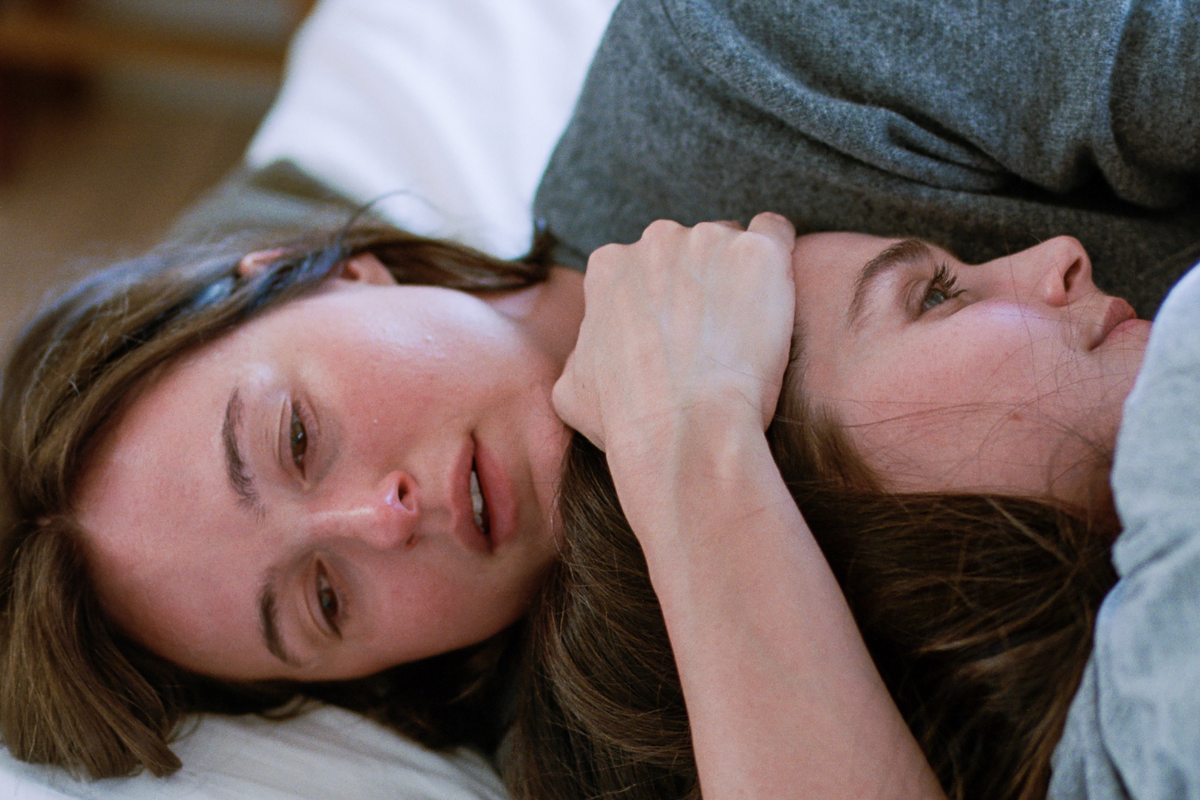INDIE SPOTLIGHT: Interview with Psychological Horror Film ‘The Beldham’ Writer-Director Angela Gulner
Angela Gulner, the mastermind behind this psychological horror film, talks about the genesis of the film, pulling from a personal space of intergenerational connections, the advantage of one location and minimal characters, using misdirection for character development, her collaboration with key creatives like her cinematographer Ksusha Genenfeld and landing on the films specific aspect ratio, and so much more.
When she first got pregnant, Harper already knew that having a child wasn't going to be an easy task. What she never expected was to have to deal with a generations-old evil presence that has been living on the family's farm. Katie Parker, a recurring actress in Mike Flanagan's works, and Cobin Bernsen, known for Brian Yuzna's The Dentist , among other roles, star in a harrowing tale of ghosts and first-time mothers.
The spooky season is upon us, and no better way to kick it off than with this indie horror gem The Beldham, which is having its World Premiere on October 3, 2024, at Sitges Film Festival in Spain. And for those in the US, you can catch the film's North American Premiere at the Austin Film Festival, taking place October 24 – October 31, 2024. The Coven (the folks behind the horror franchise Terrifier) boarded the film as the film's sales agent - which is a perfect coupling for the film's thematic elements and The Coven's forthcoming slate of films.
Angela Gulner, the mastermind behind this psychological horror film, recently spoke with Script about the genesis of the film, pulling from a personal space of intergenerational connections, the advantage of one location and minimal characters, using misdirection for character development, her collaboration with key creatives like her cinematographer Ksusha Genenfeld and landing on the films specific aspect ratio, and so much more.
This interview has been edited for content and clarity.
Sadie Dean: I'd love to hear about what came first. Was it the title? Was it the character, Harper, or the story?
Angela Gulner: What did come first was the character of Harper. I'm 37, my parents are aging, grandparents are really aging, and so it was really inspired by seeing that generational changing of the guard happen within my own family, and sort of the ripple effects of aging and what that does to intergenerational connections. So, it started there and sort of built out from there. The last thing to come was actually the monster. That was kind of the last piece of the puzzle.
Sadie: What was your writing process for this, and having that advantage of really one location to do all this?
Angela: Indie film is so challenging that if you can limit the number of challenges, that makes executing a lot more possible. So, I definitely wanted to keep it to one location. But it also, it felt not just a good producorial choice, but sort of integral to the story, and the feeling of being trapped in your world, sort of collapsing in on you. And so, I wanted the house to feel as much of its own character as sort of anything else.
And the house that we found was really cool because it's deceptively big and has a lot of character of its own, which is really great. And it didn't make it into the film, but what was really crazy is that in the basement there were tiles that were little crows on the floor of the basement –
Sadie: Original to the house?
Angela: Yeah! When we saw that, I was like, ‘OK, this is too creepy to not use.’ But it felt like a nice blend of the house being a little bit in disrepair, but not so much that people couldn't live there without seeming absolutely insane. [laughs]
Sadie: Another thing I really appreciate about this movie, was your character development, but through the use of misdirection - primarily, Harper and Sadie. While you're tackling this and building up this world, and mind mapping everything, knowing when to give those little crumbs, and then knowing when to hold back? And then you come in with this huge twist. How were you able to plot that out?
Angela: It was tricky, and we played a lot on set. I would have Patricia [Heaton] do three different takes of a lot of lines. I would do one really, really cold take, one really, really warm take, and something in the middle, because I knew that we were going to have to really sort of feel it in the edit, where the line is, especially with her character, how hard we could go with her as a villain, but still get the audience back at the end without making her so harsh that you can't come back from it. And she's such a great dynamic actress. And I think she had a lot of fun playing - I'm like, ‘OK, here's the villain take, here's the nice mom take.’ And so we just, we had a lot of options to play with in the edit as we were finding what progression works the best for the film as a whole.
Sadie: Going back to the advantage of one location - writing to direct - what kind of prep were you doing in terms of pulling from inspiration, outside influences, and putting that all into one location, with minimal characters?
Angela: And we shot really fast. We only had 15 days. So, the cinematographer, Ksusha Genenfend, she's amazing and brilliant, we did a ton of pre-production to maximize the amount of time we get with actors to play with such few days in order to work with. And the shooting style that we ended coming up with, I think, really allowed us to maximize the amount of play because we didn't do a ton of coverage. We really wanted to focus on Harper for as much of the film as possible. And so, there are a lot of takes where it's just backs of other characters to sort of build this feeling of paranoia and being surrounded and sort of having your rights taken away from under you without you having any power to do anything about it.
But what was really great is the two younger actors, Harper and Bette, are really good friends of mine, and I wrote it for both of them. They've read so many different drafts of the script, and were able to kind of give feedback and help kind of build those characters. And so, writing for actors that I knew really well also really helped that super quick shooting process. The three women didn't know each other at all before going into shooting, but they also but they all just clicked really quickly and got along really well, and so it kind of gave us a really nice shortcut to the family dynamic, which is great.
Sadie: Another shout out to your DP, but just the use of practical lighting, which I assume is majority of the film, but also the aspect ratio, where you really feel boxed in, in this house, and again, like that psychological horror that's happening. It just works so well.
Angela: Oh, I'm so glad we spent a lot of time going back and forth on the aspect ratio. It was something we spent a lot of time thinking about. But we wanted to really build that feeling of paranoia and being trapped. So, I'm glad it worked for you.
Sadie: What kind of inspired you to become a filmmaker?
Angela: I started as a theater actor, and I did the MFA track. And I always thought that I would end up in New York and want to do theater and performance art and kind of live in that space, but I did a film between my first and second year of grad school, and I just fell in love with being on set and how kind of impossible every single day is. And that feeling of camaraderie and getting through the trenches, to get to the other side of the day and feel like you've really made something together. I just really fell in love with that feeling.
But I still approached it as an actor, but after a couple of years in LA, I just felt really bummed by the lack of agency and creative control I felt that I had as an actor. And so, I started writing as a way to write roles for myself. And then sort of learned, ‘Oh, if you write something, you gotta get the thing made.’ [laughs] So then I started producing so that I could make the thing, so that I could act in the thing. And then I realized, ‘Oh, I actually just like the act of making things, maybe even more than I like acting.’
And after spending a good handful of years writing and producing, I felt ready to direct. And that's kind of where I am now. I directed a show here, we just closed last night - a new play here in Dallas, where I live, that we closed last night. So, I'm excited about this next stage of my storytelling career, being in the director's seat.
Sadie: With your theater background, how much does that influence your approach to filmmaking, especially working with actors?
Angela: I find it to be very useful. I'm a very physical actor, and I think I'm also a very physical director. I just like to be right there with the actors, sort of part of the experience. I think just having done it as an actor for so long, I know what works for me as an actor. And every actor is different and needs different words to help find the moments if we're trying new things on set. But I think I just have a nice shorthand, because my body has gone through character development and being on set.
And I think it definitely helps to understand too, the pressures of being an actor, especially on a film where you're waiting and the whole crew is spending hours prepping the shot for you, and then you go and you have a couple of minutes to nail the thing. It's a lot of pressure. And so I think having compassion and understanding for the unique challenge of being an actor, especially in indie film, can be helpful, because it can be a lot of pressure, and you've got all these eyes on you. Whereas in theater, you've got weeks and weeks to rehearse and feel comfortable, you're just sort of diving into the deep end on set. So, I try, and I hope I'm mostly successful creating a safe environment to play, even though the hours tick by way too fast. [laughs]
Sadie: Are there certain stories or themes that you're excited to explore as a storyteller, and is horror the genre you're really excited about, or you want to do explore other genres as well?
Angela: I definitely love horror, and I love using elements of horror in other types of stories too. I love how horror is always in conversation with the horror that's come before it. It's a genre that's very much alive and adaptive and changes and weaves. And so, the next film that I'm aiming to make is a Western horror, but it's got a ghost in it. It's got a horror element to it. So, I find it pretty hard not to infuse horror into my work. It's the internal made external.
And it is so, to go back to your question about theater, it is so theatrical. The horror genre and fantastic genres, you get a lot more permission to do sort of strange things with images and play with sense and play with timing and rhythm and musicality and sound design is so crucial in horror, too. So, I definitely want to keep playing in the genre space. It's a space I really love to be in.
Sadie: That perfectly segues into my next question, which is sound design. The sound design on this. I mean, I don't think I'll ever be able to hear a crow again. I'm already freaked out by them, because they're just so smart. So now there's that extra layer.
Angela: They’re so smart. Bryan Parker, who did our sound design, is absolutely incredible. He's got Emmy nominations for his television work, but he's really passionate about working with indie filmmakers, and he's actually sound designed a couple of different films that Katie [Parker], our lead, has been in. He's such a special creative force and is so invented. Before we even went into production, he would be filming birds and just send me different sounds that he had been capturing. I like to call it a haunted aviary, which is, I think, what he sort of created with the sound.
But the movie just…it wasn't a movie until he his work was in it. He created such a specific world, and it is in such a beautiful conversation with all of the other elements of the film. And our composer, Stephen Limbaugh, also found a really strange there's sort of fairy tale themes within it, and the two of them work so beautifully together. I feel so lucky to have gotten to collaborate with both of them.
Sadie: Any advice you may have for first-time filmmakers now, having made your first feature?
Angela: I would say plan, plan, plan plan, [laughs] so that then when you're on set and things change, you have the freedom to go in a different direction, make a different choice. But if you have that foundation of just really knowing what each scene needs and to have a map that's really clear in your brain, I think at least for me, the way I work, I have to just over plan to the nth degree so that I feel free to make other choices in the moment.
And we made some big cuts, some big shifts in the moment on set. Because you can have a plan in your head, but once you see the light in the room, see the actors in the costumes, start to feel and see what the film tells - the film sort of teaches you what it needs to be as you're going through it. And so, for me, in order to feel safe enough to experiment, I have to really have a really solid plan.
And then I would just say, always surround yourself by people who are better at everything than you are, so that you can constantly be learning. I feel so lucky to have worked with Ksusha. I can't rave about her enough. She's such a special talent behind the camera, and she was a really perfect collaborator for a first-time feature director, because she comes in with such a clear vision. She's such a calm, positive, joyful force. And on a very small film, very few days, she really approaches the work with such a sense of possibility that it was a really special experience.
The Beldham World Premiere is October 3, 2024, at Sitges Film Festival.
Sadie Dean is the Editor of Script Magazine and writes the screenwriting column, Take Two, for Writer’s Digest print magazine. She is also the co-host of the Reckless Creatives podcast. Sadie is a writer and filmmaker based in Los Angeles, and received her Master of Fine Arts in Screenwriting from The American Film Institute. She has been serving the screenwriting community for nearly a decade by providing resources, contests, consulting, events, and education for writers across the globe. Sadie is an accomplished writer herself, in which she has been optioned, written on spec, and has had her work produced. Additionally, she was a 2nd rounder in the Sundance Screenwriting Lab and has been nominated for The Humanitas Prize for a TV spec with her writing partner. Sadie has also served as a Script Supervisor on projects for WB, TBS and AwesomenessTV, as well as many independent productions. She has also produced music videos, short films and a feature documentary. Sadie is also a proud member of Women in Film.
Follow Sadie and her musings on Twitter @SadieKDean







